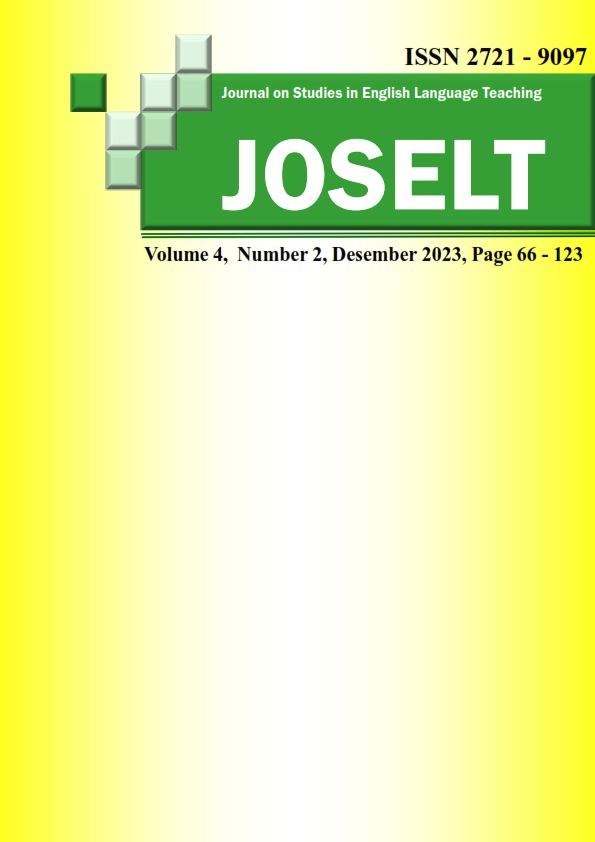Grammatical Error on EFL Students’ Argumentative Writings: A Case Study
Keywords:
EFL students, Argumentative writing, Grammatical errorsAbstract
A study on error analysis is an important way to see the ability of the students in the foreign language learning process, particularly in writing. This is also very meaningful to enrich the method of teaching particularly teaching English as a foreign language. Therefore, this study aims to investigate the grammatical errors in the students’ argumentative writings and to find the most frequent errors made by the students. There were thirteen students of the International Program argumentative writings used as the data in this study. This study is very important because the students will do their final project in the English language. The data were analyzed based on the Surface Strategy Taxonomy which includes omission, addition, misformation, and misorder. The finding shows that all students made grammatical errors in their argumentative writing. The finding showed that there were 13 errors of misformation, 12 errors of omission, 7 errors of addition, and the last was 1 error of misorder. The most frequent error was the error of misformation. This finding is expected to be used as a reference for the teacher in planning the lesson to improve the understanding of the students in argumentative writing.
References
Al-Khresheh, M. H. (2016). A Review Study of Error Analysis Theory. International Journal of Humanities and Social Science Research, 2, 49–59.
Alghazo, K. M., & Alshraideh, M. K. (2020). Grammatical Errors Found in English Writing: A Study from Al-Hussein Bin Talal University. International Education Studies, 13(9), 1. https://doi.org/10.5539/ies.v13n9p1
Brown, H. D. (1985). Language learning and teaching. In Language Teaching (Vol. 18, Issue 2). https://doi.org/10.1017/S0261444800011472
Dulay, H. B., Burt, M. & Krashen, S. S. (1982). Language Two. Oxford University Press, 200 Madison Ave., New York.
Ferretti, R. P., Andrews-Weckerly, S., & Lewis, W. E. (2007). Improving the Argumentative Writing of Students with Learning Disabilities: Descriptive and Normative Considerations. Http://Dx.Doi.Org/10.1080/10573560701277740, 23(3), 267–285. https://doi.org/10.1080/10573560701277740
Hagemann, J. A. (2003). Teaching grammar : a reader and workbook. https://books.google.co.id/books/about/Teaching_Grammar.html?id=ZC8CAAAACAAJ&redir_esc=y
Jairos Gonye. (2012). Academic writing challenges at Universities in Zimbabwe: A case study of great Zimbabwe University. International Journal of English and Literature, 3(3), 71–83. https://doi.org/10.5897/ijel11.092
Mahmoodzadeh, M. (2012). A cross-linguistic study of prepositions in Persian and English: The effect of transfer. Theory and Practice in Language Studies, 2(4), 734–740. https://doi.org/10.4304/tpls.2.4.734-740
Oshima, A., & Hogue, A. (2007). Introduction to Academic Writing : Answer Key. In Pearson Education Limited. https://edisclipnes.usp.br/plueginefile.php/3928474/mod_resource/content/1/IntroductiontoAcademicWriting.pdf
Smith, S. &. (2001). Interference and Other Problems.
Thresia, F.-. (2015). an Error Analysis of Argumentative Essay (Case Study At University Muhammadiyah of Metro). PREMISE JOURNAL:ISSN Online: 2442-482x, ISSN Printed: 2089-3345, 2(2), 136–144. https://doi.org/10.24127/pj.v2i2.687

